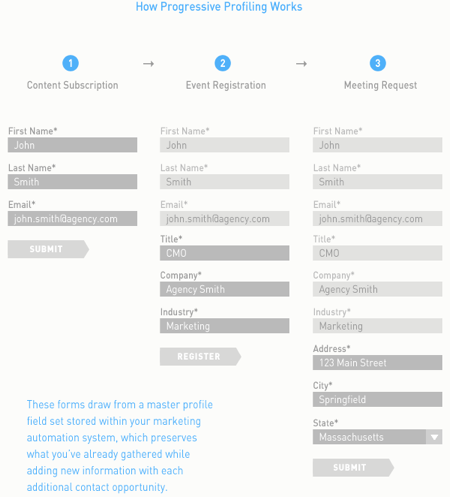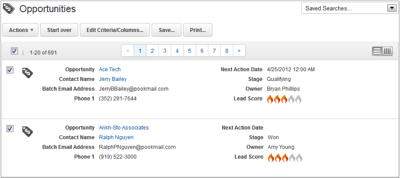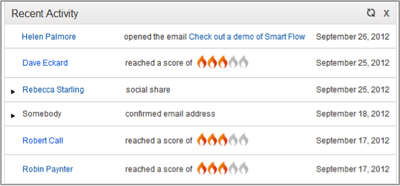Over the past few years the marketing ‘sales funnel’ has changed shape – where previously prospects could be captured without much effort with a broad net, to be guided on a quick journey to sales – nowadays the funnel is narrow and long – marketing catch fewer prospects at the top end of the funnel and then the prospects who are brought into the funnel need longer sales cycles to close.
To say that the reason for the change is the Internet would sound a little to cliche no matter how true it is. This is because the power has shifted from the seller having all of the control and information to the buyer having ready access to information. A sales person is no longer the gatekeeper of information, they are now the investigator to probe the client to see if the solution is a match for the prospects needs. Websites and product comparisons are easy for consumer to access and because companies are giving away so much free information before a prospect engages with the sales funnel it is becoming harder to capture initial leads. Businesses have to expend more energy into persuading prospects to purchase, and the sales cycles get elongated.
Lead nurturing is an essential part of the process – Lead nurturing takes raw inquiries & requests and transforms a certain parentage into qualified leads. The qualified leads continue down the sales pipeline where the customer is provided timely information based on their interactions with the business. As the lead moves down the funnel towards the goal, which might be a purchase or an information request the nurturing continues to reinforce and support the sale. Lead nurturing is part of Lifecycle Marketing and it consists of a number of steps, involving all the relevant communication channels at the marketers disposal. This may include emails, direct mails and newsletters to webinars, podcasts, surveys and telephone calls.
What is ‘lead nurturing’?

Lead nurturing is not a single marketing campaign, but rather a series of steps and communication process with the specific objective of developing and building a relationship with the potential customer. The process is to build a relationship and a conversation with a client that may develop down the road into a sale.
Marketing must concentrate on Qualified Leads
Lead qualification is the process of determining which leads fit the specific criteria of the business. For some businesses the initial steps for qualifying means that they did not get disqualified by a set of rules or criteria. A perfect example would be a local business that gets leads outside their service area may disqualify leads based on broad strokes like ZIP code, or City. For other types of businesses disqualifier may be male vs. female or on any other piece of information that you determine as fundamental to your lead pipeline.
A marketer needs to figure out whether a lead is worth the effort of nurturing. A typical framework to determine the set of rules or cannons to measure a client against can be to build an ideal buyer profile which will be based on such things as company demographics or going down the traditional route and assessing new leads according to BANT (Budget, Authority, Needs, Time frame). B2B marketers can make a template of their ‘ideal customer’ profile. This will enable them to work out which leads will make the best prospects.
Money and investment will be spent on following through with qualified leads so this is a concept which must be thought through carefully, with both sales and marketing on the same wavelength.
What is a “Sales ready” lead?
It’s also essential that Business-to-Business marketers map out what it is that makes a ‘sales ready’ lead ‘ready’. Some estimates state that up to 80% of leads which are passed to sales are unqualified either because they are were not “sales ready” or they were not appropriate leads for the business. Again sales and marketing departments must get together to work out the characteristics of a ‘sales ready’ lead before the start of the campaign. It’s a whole lot easier to nurture the prospect with marketing automation than it is to send an unqualified prospect off to the sales team. Not only does it cost time and money but it also damages the confidence that sales can have in the quality of the leads that are sent to them.
In most organizations there is a balance between lead quantity and lead quality, but the tipping point as to when a prospect moves from the bottom of the marketing funnel to the top of the sales funnel will need to be defined.
Get to know your prospects
Advice and information will be used to attract leads to your website. In the phases of Lifecycle Marketing this is referred to as lead capture this is where you exchange knowledge and information for your prospects contact information.
Examples of contemporary lead capture methods include:
- White Papers
- Webinars
- How-To Guides
- Coupons / Bonuses
- Assessments or Tests
After you have captured the lead there are number of ways to communicate with your prospect. Typically there will be a Thank you or Confirmation email that will provide the initial contact, and from there the lead nurturing cycle begins.
Directing prospect to Lead magnets should not be a one time event. In fact the more frequently a prospect engages and looks for additional content the more likely that they are qualified as a lead for sales. An example lead lifecycle may include a leads generated after registering for and downloading a white paper could then be followed up by sending an email with additional relevant content attached and perhaps an invitation to sign up for newsletters or register for a webinar. Marketers need to continue to ‘drip’ messages to stay in touch with prospects. And at each point you should be gathering a little bit more information about the prospect and automatically appending this to their contact record for lead scoring.
Find out as much as possible about your leads using progressive profiling

Image from https://www.newfangled.com/how_marketing_automation_works
Every company is made up of individuals who will go about their purchase in different ways. There are Six Shopper Archetypes that you’ll have to deal with. Each of these personas will respond differently to your messages and depending on the value or risk of the product or service a business is offering the buy cycle will be more or less complex.
Buyers of complex technological systems will take their time before committing to a purchase. They could take anything from 3 months to a year to be nurtured into buying and lead nurturing campaigns need to reflect this.
Along the way marketing can start to find out more specific details about these leads, what their timescales for buying are, how much purchasing power they have, what are their particular ‘pain’ factors – technology buyers are buying high end products which will have a big effect on their company – hence they are taking a great deal of personal risk themselves when making the decision to purchase.
Keeping it all straight with Marketing Automation
Once you get past having more than a dozen or so prospects or if you have more than one person in sales or marketing roles it will become nearly impossible to manually track the lifecycle stages that your prospects are in. Some people like to call these CRM systems but for marketers they are far more powerful than simply having the details of the last conversation or who the “decision maker” is in the company.
At its most basic level a marketing automation system will need to have information about budgets, time-lines, buying power of prospects and their behavior. But the gold is captured in how the prospect is interacting with your company, and not vice-versa.
Take a look at your current CRM, and peek at an active record. Are you able to see all of the white papers, webinars and emails that the customer has responded to. Do you know the last time they were communicated with and what products are the most appealing to them?

The data that you collect at each interaction should enhance your knowledge about the prospect and clarify the exchange between sales and marketing. Some companies use Lead Scores as a way to track the progress of a lead in the marketing process.
![]() My marketing automation tool of choice for the small to medium sized businesses is Infusionsoft – click to view the demo.
My marketing automation tool of choice for the small to medium sized businesses is Infusionsoft – click to view the demo.
Marketing automation will help to accelerate the pace of conversion
Ideally lead scoring will be based not simply on traditional measures like company revenue, type of industry, number of employees but with behavioral data such as the number of visits to your website/to high value pages, downloads, forms filled in, responses made to emails.
 Good prospects can be accelerated along the buying cycle by using ‘triggers’ – by reacting to changes in buyer behavior in ‘real time’ marketing managers can quickly modify their communications to leads by monitoring their online behavior. Marketing technology is available which can analyze the behavior of leads and adapt and speed up the process of lead nurturing. For instance if a prospect starts to visit the pricing page on your website, this should alert the system to see them as ‘hotter’, which means their value to you as a lead has suddenly gone up. By reacting to this new information perhaps by sending promotional messages to them or even prompting a phone call to them, they may be persuaded to make a decision to buy based on engagement.
Good prospects can be accelerated along the buying cycle by using ‘triggers’ – by reacting to changes in buyer behavior in ‘real time’ marketing managers can quickly modify their communications to leads by monitoring their online behavior. Marketing technology is available which can analyze the behavior of leads and adapt and speed up the process of lead nurturing. For instance if a prospect starts to visit the pricing page on your website, this should alert the system to see them as ‘hotter’, which means their value to you as a lead has suddenly gone up. By reacting to this new information perhaps by sending promotional messages to them or even prompting a phone call to them, they may be persuaded to make a decision to buy based on engagement.
Return Leads from Sales to Marketing for re-nurturing
Clear lead tracking and a closed-loop feedback system are two of the essential attributes of a firm actively involved in marketing best practice today. A clear two way channel of communication between sales and marketing will mean that ‘sales ready’ leads (those pronounced sales ready by both marketing and sales) will be entered into a feedback system in which sales have incentives to send back to marketing any leads which could not be converted.
There are many reasons why a ‘hot’ lead decides against a purchase – perhaps there has been a sudden change in budget/change in management structure or the lead may be leaving the company etc. What’s important is that no blame is apportioned but a ‘try again later’ attitude towards the leads.
In fact sales may have picked up even more useful information about these recycled leads, information which could help drive marketing’s campaign to energize them.
Good Lead nurturing can and should be Quantifiable
According to CSO Insights “companies that have a formal lead nurturing process have a considerably higher return on their marketing investment”. It has been shown that by using best practice in lead nurturing means more prospects convert to buyers meaning a better return on investment or cost per opportunity.”
Lead nurturing campaigns must be measurable in terms of addition to revenue – this is not only good for raising the visibility of marketing within the organization but the success is essential for the company overall.
Good nurturing will bring the advantages of higher conversion rates, with shorter sales cycles.
Nurturing is for life, not just for one campaign
One of the biggest mistakes that companies make is to ignore existing customers in their nurture sequences. Existing customers need to be nurtured, not only from the point of view of keeping them happy with existing products and services, but in terms of encouraging them to make further purchases from you or to generate referrals for your sales team.
As long as you continue to delight your current clients and you reinforce your relationships to that they continue to trust you. Given the the risk involved in buying these types of products, buying from your company again looks far less ‘painful’ than buying from other unknown companies – starting a buy cycle all over again is tiring and costly for them too.





